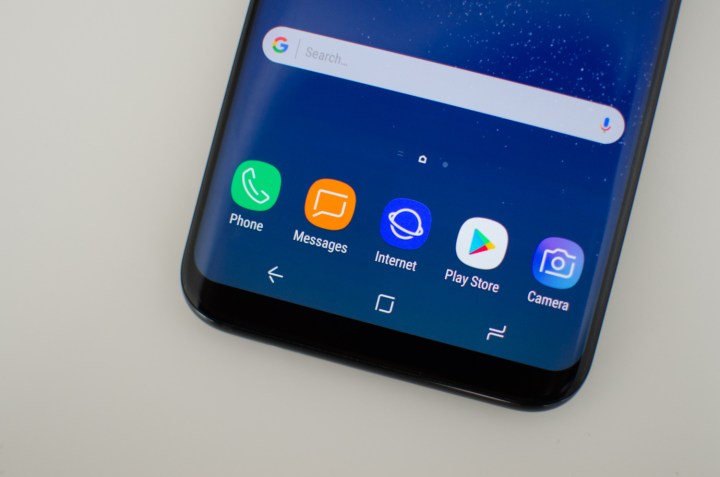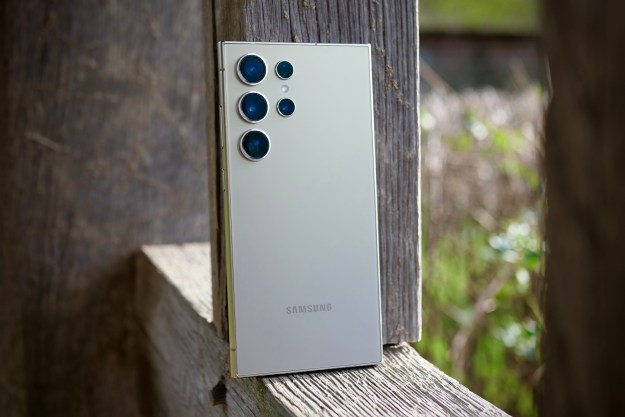
Prior to the phone’s worldwide launch, the Korea Herald reported some customers in the region were complaining about a red tint to the panel that couldn’t be corrected by changing the color balance in the settings.
This week, an update reached T-Mobile Galaxy S8 customers in the United States giving users deeper control over color balance, so they could fix the issue themselves. Unfortunately, it doesn’t appear to be doing the trick in all cases, according to commenters on Reddit.
“I wonder if I just got a bad phone,” one individual responded. “Update makes my red tint into blue tint.”
Others have had better luck.
“I modified the setting a tad bit. Shift one click cooler, and reduced the red scale by about 30%,” another said. “It’s not red anymore unless I really look, but it’s enough to not notice anything wrong. It really didn’t bother me much before.”
On some devices, users have been able to manually correct the tint with the tool provided in the update. Other handsets are still presenting issues, with some owners saying that attempting to compensate for the red shift is resulting in too much blue or green.
While it’s possible that those who are still suffering may just be improperly modifying the display’s color balance, the responsibility to fix the problem should not land squarely at customers’ feet. Samsung may have released a tool that allows people to fix the issue on their own, but color balance is a very tricky thing to get right, and the company is misguided if it expects owners to be able to flawlessly do all the work.
Samsung maintains potential defect is a non-issue
Samsung has steadfastly downplayed the problem every step of the way, even while it issued the update. The company responded to the initial report by saying the phenomenon was “not a quality problem,” and could “be adjusted with the phone itself.” Then, several days later, a spokesperson from the company confirmed to the Korea Herald that it would distribute the software tool in an effort to relieve users’ concerns.
“We will upgrade the software because of some dissatisfied customers although there is no problem in the phone itself,” Samsung told the publication — which makes the fix either a tacit admission of guilt or an attempt to minimize a potential public relations roadblock as the company launches its biggest product of the year.
All this update does, according to the Korea Herald, is allow for a greater range of color in the display settings, so that owners can turn down the red effect further than was previously possible. Based on an image in the article, both the standard Galaxy S8 and the larger Plus variant have been affected.
Some have speculated the cause might be the unique construction of the display. While typical LCD screens in smartphones utilize three equally sized subpixels — red, green, and blue — the Galaxy S8’s AMOLED panel features an unconventional layout where small, oval-shaped green pixels sit between much larger, diamond-shaped red and blue pixels. This results in twice as many green sub-pixels as the rest, which, according to industry personnel not identified in the Korea Herald report, initially created a green shift.
Samsung supposedly attempted to correct for this by dialing up the intensity of the red sub-pixels, and in the process, may have made them too strong.
This news comes a month after experts at DisplayMate awarded the Galaxy S8’s panel the highest grade they’ve ever given to a smartphone screen. The review noted the inclusion of a user-adjustable white point setting and commended the device for its very accurate standard color gamut.
We should also note that a teardown of the Galaxy S8 Plus from the DIY specialists over at iFixit called the handset “essentially unchanged” from the Galaxy Note 7, at least when it comes to internal design. Rather, it would appear that Samsung is attempting to avoid a repeat of last year’s spontaneously combustible debacle by way of more thorough pre-release testing of its new flagship.
All the same, it is being reported that the battery voltage, capacity, and “design tolerances” are “virtually identical” between the new phone and the ill-fated old one. Moreover, iFixit apparently tore down a Plus that had a cell from “the same manufacturer as some Note 7 batteries.”
Article originally published on 04-18-2017 by Adam Ismail. Lulu Chang contributed to this report. Updated on 05-04-2017 by Adam Ismail: Added reports from T-Mobile users who have received the software update.
Editors' Recommendations
- Galaxy AI is coming to more Samsung phones very soon
- 5 ways the Samsung Galaxy S24 beats the Google Pixel 8
- Every Android tablet we’re expecting in 2024
- 5 phones you should buy instead of the Google Pixel 8
- A surprise phone just beat the Galaxy S24 Ultra in a big way



